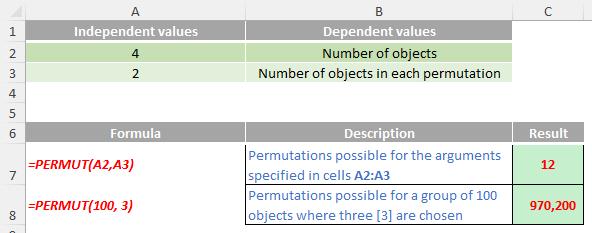A to Z of Excel Functions: The PERMUT Function
11 September 2023
Welcome back to our regular A to Z of Excel Functions blog. Today we look at the PERMUT function.
The PERMUT function

This function returns the number of permutations for a given number of objects that can be selected from number objects. A permutation is any set or subset of objects or events where internal order is significant (i.e. order is important). Permutations are different from combinations, for which the internal order is not significant (i.e. order is unimportant).
It is defined as follows:

For example, selecting two numbers out of the set {1, 2, 3, 4} where order is important gives you the following pairs: {1, 2}, {1, 3}, {1, 4}, {2, 1}, {2, 3}, {2, 4}, {3, 1}, {3, 2}, {3, 4}, {4, 1}, {4, 2} and {4, 3}, which is 12 ordered pairs.
You can clearly see you could use this function for bingo-style probability calculations and realise why you will never be rich. (Do note this example: bingo is appropriate here since it considers when you get the winning final number; for a lottery, you would not care which order the numbers were selected as long as they are picked.)
The syntax of the PERMUT function is as follows:
=PERMUT(number, number_chosen)
It contains two arguments:
- number: this is required and represents an integer that describes the number of objects
- number_chosen: this is also required and denotes an integer that describes the number of objects in each permutation.
It should be noted that:
- both arguments are truncated to integers
- if number or number_chosen is nonnumeric, PERMUT returns the #VALUE! error value
- if number ≤ 0 or if number_chosen < 0, PERMUT returns the #NUM! error value
- if number < number_chosen, PERMUT returns the #NUM! error value.
Please see my examples below:

We’ll continue our A to Z of Excel Functions soon. Keep checking back – there’s a new blog post every business day.
A full page of the function articles can be found here.

